I am feeding an interrupt input with the output from a CMOS Schmitt inverter. The falling edge of the inverter is nice and clean, But the rising edge is really dirty, and can get downright ugly at times. (See pictures)
Why is the ringing so much worse on the rise than on the fall??? What might be causing this noise on rise and how can I clean it up? (Note that the "ringing" on rise does not happen in a consistent manner, with some cycles it is far worse than others.)
The inverter is a 74AHC1G04, with 5V supply. Processor is LPC1517 at 3.3v. The connection between the two is < 5mm. Both parts share a ground plane on layer 2, but have separate power planes on layer 3.
(Input to inverter is an H11AA4 AC optocoupler, with the point to obtain a zero cross signal.)
[![Relativly clean falling edge][1]][1] Clean!
[![Dirty rising edge[![][2]][2]][2] Dirty! (8 seconds of persistence)
 Zoom in on a dirty example (1 second of persistence)
Zoom in on a dirty example (1 second of persistence)
 Inverter input and output, triggering on inverter rise.
Inverter input and output, triggering on inverter rise.
Argh, I had 4 snapshots to post, but I can only post 2 with my current "reputation" on this board.